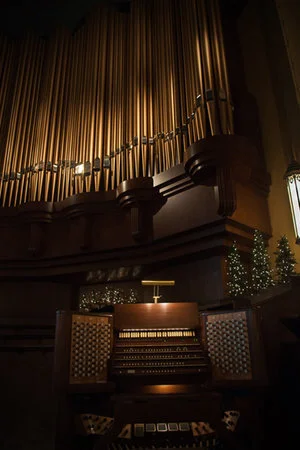
Lied Chancel Organ
Lied Chancel Organ
This organ, built for First-Plymouth Congregational Church, and for all of the people of Lincoln, is the Magnum Opus in our 121 years of organ building. In an interesting way, this instrument both reviews that history and looks forward to the next century. Its design draws upon the great traditions of Romantic organ building, a style which had taken hold at the time of our company’s founding, and incorporates them into a modern framework expanding the tonal color and dynamic range of the pipe organ. The design is based on the idea that the organ can, and should, have the same kind of expressive range as the symphony orchestra -- subtle shadings of tonal color, dramatic contrasts of volume, beautifully shaped melodies and sharp accents -- attributes which give life to music. This is the fourth in a series of large instruments with which we have been charting new territory in the advancement of organ tone and mechanism.
There is a very practical reason for this emphasis on musical expressiveness. This is a church organ. Its primary role is accompanimental. It must support congregational singing, accompany the choir in a wide variety of service music and anthems, provide musical interludes to help set the mood for the service, give appropriate settings for weddings and funerals, and serve the Abendmusik series performances including large orchestral and choral works. Certainly a church organ must be able to play the solo repertoire, but it is called upon far more often to accompany others. Accompaniment is a subtle art. Tones must complement, not compete with the solo voices or instruments. Volume must be exactly right so as to support, but not cover. In many choral works, the proper sound behind the choir is that of the very powerful and dramatic full organ; however, it must be available at many different levels - not just loud! At First-Plymouth there is the additional special role of working with the Plymouth Brass. To be an effective partner, the organ must have adequate power and brass-wind stops of the appropriate timbre.
There is one other factor which makes a church organ different from others. It is heard week after week, year after year by the same people, sometimes for generations! An organ with a limited number of tones can get very tiresome indeed. To serve and inspire a congregation, a church organ should strive for maximum variety so that musical interest will be maintained.
The accompanimental role and permanence of the church organ are what led us to this particular design and also answers the question often asked: “Why is this instrument so large?” It is large not to be loud, but to be soft! A small organ can be very loud...and very boring. The size of the Lied Organ allowed us to provide many different types of tones at each volume level, with most of these being medium and soft. The organ has over 6,000 pipes divided into 110 ranks (or instruments), 85 voices or stops (individual tone colors) and 9 divisions (something like the sections of the orchestra). The pipes range from a length of over thirty-two feet to under a half-inch. This gives the organ a frequency range greater than that of the symphony orchestra. Many of the pipes are in expression boxes, which allow the organist to make them louder or softer by opening or closing louvers at the front of each box. This organ takes that concept a step further by providing auxiliary expression boxes located inside main expression boxes thereby doubling the intensity control. We place the loudest and softest voices of a division in these auxiliary boxes, thus extending dramatically both the softest and loudest ranges of volume. You’ll hear this effect tonight from both the most powerful trumpets and the softest ethereal strings. One stop, the Celestial Vox Hu- mana, is under triple expression. Its special expression box is located within the Celestial auxiliary box which speaks in turn into the main Solo box.
The organ has some other unusual expressive devices. The Variable Tremolo allows the player to change the speed of the Tremolo (or vibrato) of certain stops to imitate the natural change in vibrato speed that is part of the expressive technique of good singers and instrumentalists. The Pizzicato Bass stop is very valuable in accompaniments and orchestral transcriptions, for it allows the bass line to be slightly accented, producing clarity without resorting to loud or high pitched stops as is usually required on most organs. An entirely new device is found on this instrument - the Sforzando Coupler. This makes it possible to create the same kind of sudden, momentary accent that, for example, is produced in the orchestra by the trumpets playing only the down beat or concluding note of a phrase.
We are often asked why there are organ pipes at both the front and back of the sanctuary. There are several reasons. One is very practical. The church needed to have an organ during the time the main chancel organ was being constructed. Early installation of the gallery organ provided real pipe organ music for the congregation without any interruption. Given the scope of FirstPlymouth’s music program, this was a necessity not a luxury. The long-term reasons, however, are far more important. When the choir performs from the gallery, both in services and concerts, the gallery organ accompanies them. Some works require two organs for an antiphonal effect. Many pieces in the Romantic repertoire are enhanced by the use of an echo organ, with sounds coming from a heavenly location adding a touch of mystery to the performance. Fanfares of powerful trumpet sounds are greatly enhanced when they sound from opposite ends of the church. Finally, and perhaps most importantly, when a congregation sings as forcefully as do the people of FirstPlymouth Church, it’s helpful to have organ tone coming from the back of the building as well as the front in order to keep everybody together!
ORGAN STOPS (PDF)
Modern American Organ
We proudly call this a modern, American organ with the hope that it will convey the essence of what is so common to most artistic expression in! this country. Unlike the sometimes insular traditions of other cultures, American artists freely borrow good ideas from wherever they may be found. In the world of Romantic organ building, the centers are France, Germany and England as well as America. This organ contains accents of all: these places: from France, Harmonic Flutes, the Cornet, and members of the Trumpet, Oboe and Clarinet families; from Germany, the Corno Flute and Posaune; from England, the Tubas and the Lieblich Gedeckt; and from perhaps the greatest American organ builder, E.M. Skinner, the Erzahler, Solo Gambas, English Horn, Flugel Horn, and French Horn. These sounds along with many others were selected because of their beauty of tone, not because of their country of origin. They are simply sounds that would blend with the tonal fabric of the organ and with each other. This is quite a different concept, of course, from devoting one keyboard to German sounds, another to French and so on. There was no attempt whatsoever to make an all-purpose organ by amalgamating the entire design concepts of several different traditions. The underlying ensembles of the instrument, particularly the principal choruses are not rooted in any old-world tradition. They are enhanced, immeasurably, however, by sounds that have captured our imagination in studies of organs around the world.
Perhaps the most important part of the organ is the sanctuary itself. An organ, particularly a large one, depends entirely upon the building to be its sounding board. Without a good acoustic no organ can reach its full potential. We could not have asked for a more ideal acoustical environment. This room provides rich resonance, smooth frequency response and an even distribution of sound throughout. In other words, the room is perfect! Every sound of the organ is enhanced immeasurably by this beautiful surrounding. Music is heard with clarity. The full organ sound gains nobility and grandeur through the perfectly balanced resonance that adds warmth and beauty. No organ builder could ask for more.
What an honor it has been to build this instrument for First-Plymouth Congregational Church! For all of us at Schoenstein & Co. this is a dream come true. The opportunity to work in such an acoustical environment, to serve one of the nation’s foremost church music programs, and to paint on a canvas large enough to explore fully our musical ideas comes along once in a lifetime. Most organ builders would give their eye teeth” to do this. We feel gratified to have been selected and we only hope that our work has pleased the people of First-Plymouth and of Lincoln.
We would like to thank everyone at the church who has been so helpful to us. Your nationally known music director, Jack Levick, has been our partner in the design of this instrument from the very beginning. His support and enthusiasm have been constant. No project like this could happen without a strong and inspiring leader and you have one in Otis Young. His drive made this project happen and he has shown his deep personal interest in it from the outset. The entire church staff including Sue Buss, Pam Walter, Tammy Alvis, Gary Schuerman, Tom Meyer and Jerry Jones have been totally cooperative. The massive construction required for housing the organ was designed by Lynn Jones of Davis Design and carried out by Sampson Construction with church project manager Bill Ramsay. Many volunteers from the church including Bill Ramsay, Lou Hurst, John Reinert and Bill Smith have devoted countless hours to helping with the project and even working right along with our crew. Finally, of course, we must offer thanks to the Lied Foundation and to Ruth Marie Amen, along with all of the other donors, who, like the royal patrons of old, made this work of art possible.
Jack Bethards
President, Schoenstein & Co.

